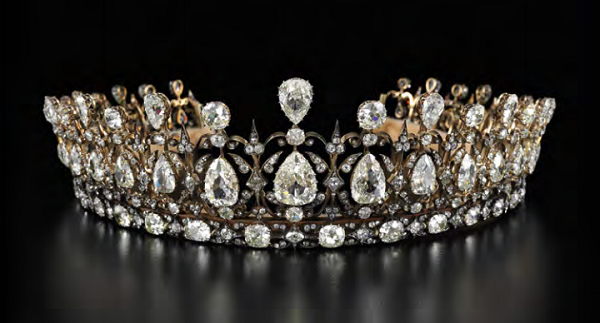
Our virtual tour of royal tiaras in museums around the world today moves across the city of London to Kensington Palace. There, we’re going to spend some time with one of the most dazzling British royal tiaras of all: the Fife Tiara.
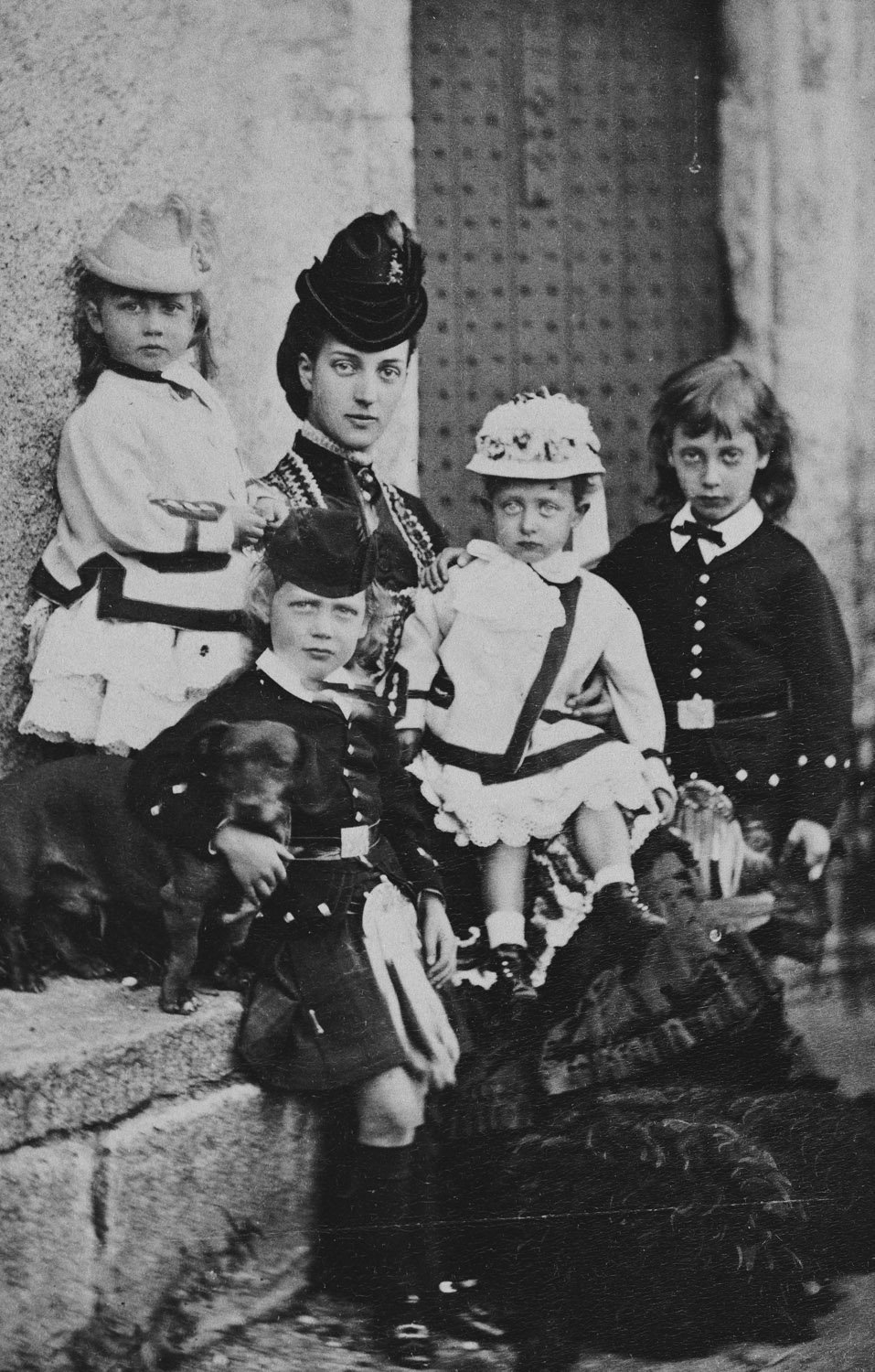
Today’s story begins in February 1867. Four years earlier, Princess Alexandra of Denmark had joined the British royal family by marrying the Prince of Wales (the future King Edward VII). After welcoming two sons, Prince Albert Victor and Prince George, Alexandra gives birth to a daughter at Marlborough House in London. The new little princess is named Louise Victoria Alexandra Dagmar, honoring her grandmothers, Queen Louise of Denmark and Queen Victoria of the United Kingdom, her mother, and her aunt, Marie Feodorovna of Russia (who was born Princess Dagmar of Denmark).
Princess Louise, who was a shy and often sickly child, grew up surrounded by a large extended family. She spent time with her grandmother and her British royal cousins at Sandringham and Windsor, and she frequently spent holidays with her mother’s family in Denmark. Along with the Danish royals, Louise’s cousins also included Russian grand dukes and duchesses, as well as princess and princesses from Greece and Germany.
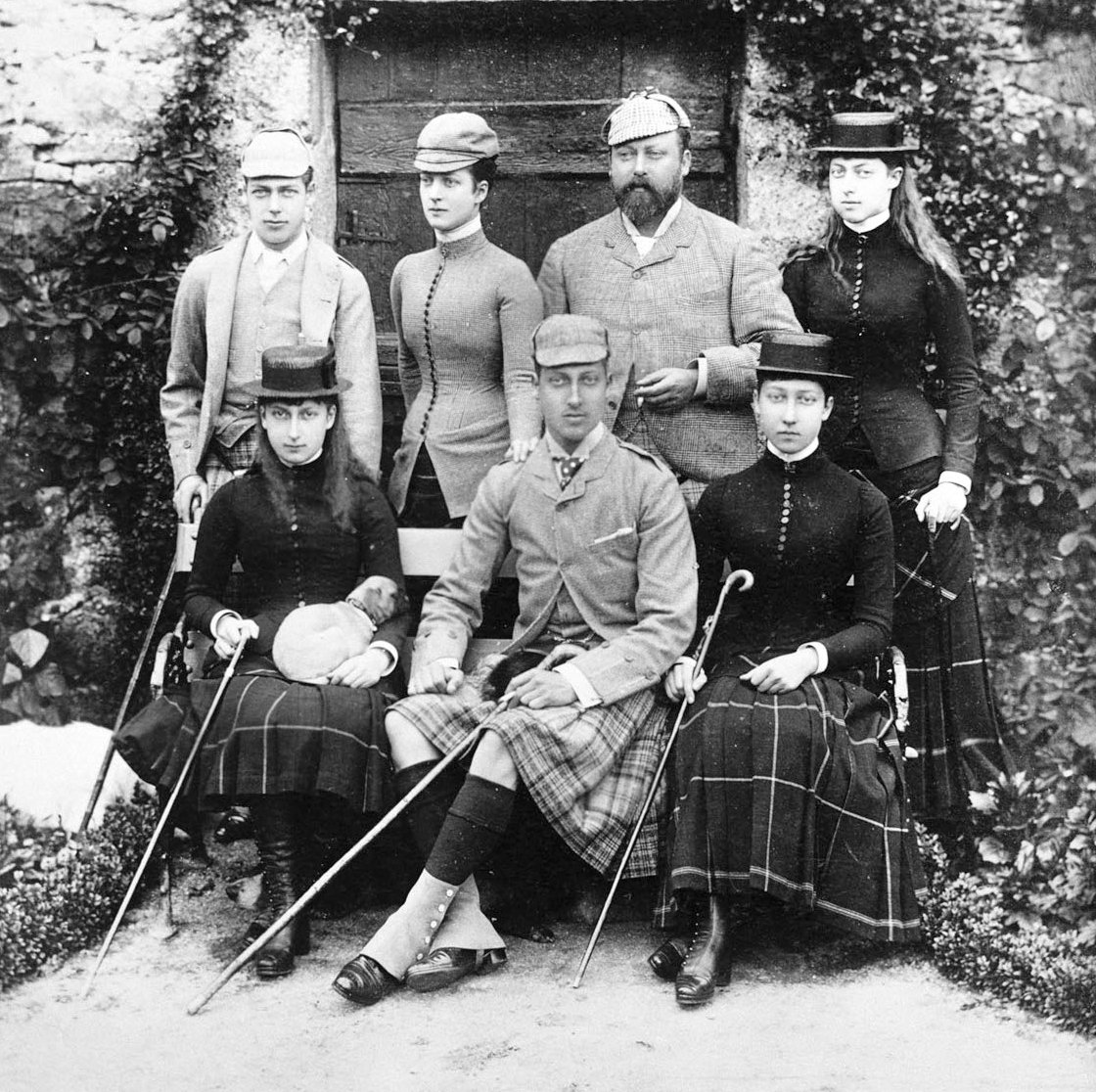
By the time she was a teenager, the press was already speculating about Princess Louise’s future marriage plans. She made her society debut in 1885, and by the following summer, papers were full of rumors that a marriage was being arranged for her with Prince Oscar of Sweden, the second son of King Oscar II and Queen Sofia. Gossip columns also speculated that Louise might marry a Russian grand duke, or perhaps Prince Alexander of Battenberg, the brother-in-law of her aunt Beatrice, who had just been booted off the throne of Bulgaria.
All the while, Louise was nurturing a crush on someone much closer to home. The object of her affection was Alexander Duff, a Scottish soldier and politician who had been known as Lord Macduff until he inherited the title of Earl of Fife on his father’s death in 1879. Alexander was eighteen years Louise’s senior, and he was a good friend of her father, the Prince of Wales. None of these things stopped the two from forming an attachment; neither did Lord Fife’s known affinities for the sort of libertine pleasures also favored by the Prince.
The Prince of Wales wrote to his sister, Princess Vicky, in Germany about the match in 1889, noting that Alexander and Louise had “been devoted to one another for two years but he was too shy to propose.” A Victorian ladies’ magazine, The Queen, backed up that statement in their account of the courtship: “The story is that the Princess has been in love with him since she came out and never cared for anyone else; and that, as every other suitor was distasteful to her, and she seemed so determined in her resolution to marry no one she did not care for, the Prince and Princess of Wales at last consented to it.”

By January 1889, the British press had caught wind of the relationship between the princess and the peer. The Pall Mall Gazette wrote, “As the rumor that Princess Louise of Wales is engaged to a popular Scottish peer is abroad, there is no harm … in saying that the Earl of Fife is meant. Whether the report is correct or not, it will not be denied that if the Princess is to marry a peer, there is no member of the Upper House more eligible as a suitor. Lord Fife, who is one of the Prince of Wales’s personal friends, was born in 1849, has ten seats, a town residence, belongs to nine clubs, is lord-lieutenant of Elginshire, and altogether immensely rich. Hitherto, he has almost been regarded as a confirmed bachelor.”
There was also much amusement at the fact that Princess Louise seemed to be following the exact blueprint of another princess. In 1871, her aunt, also named Princess Louise, married a Scottish aristocrat, the Marchioness of Lorne. Theirs had been the first marriage between a descendant of Queen Victoria and a British subject. At the time, there had been much consternation about Louise’s decision to marry a commoner. By the time the younger Louise and Lord Fife were courting, the class disparity between them was apparently much less of a bother.
In fact, the papers pointed to another issue entirely as a possible flashpoint. In June 1889, the Liverpool Echo explained that the romance had “not stirred any deep emotion such as throbbed through the country when Lord Lorne’s engagement to the elder Princess Louise was announced. But Lord Fife is generally popular, and so will the marriage be. There is one rather awkward circumstance in connection with the match, which doubtless has been fully considered. Lord Fife is in the unusual position of having two sisters who are divorcées.” Though both sisters had subsequently remarried, the paper noted that the “Queen’s strict rule in respect to the non-reception at Court of divorcées is well known. But it would be an awkward thing for two sisters-in-law of the daughter of the Prince of Wales thus to be kept at arm’s length.”
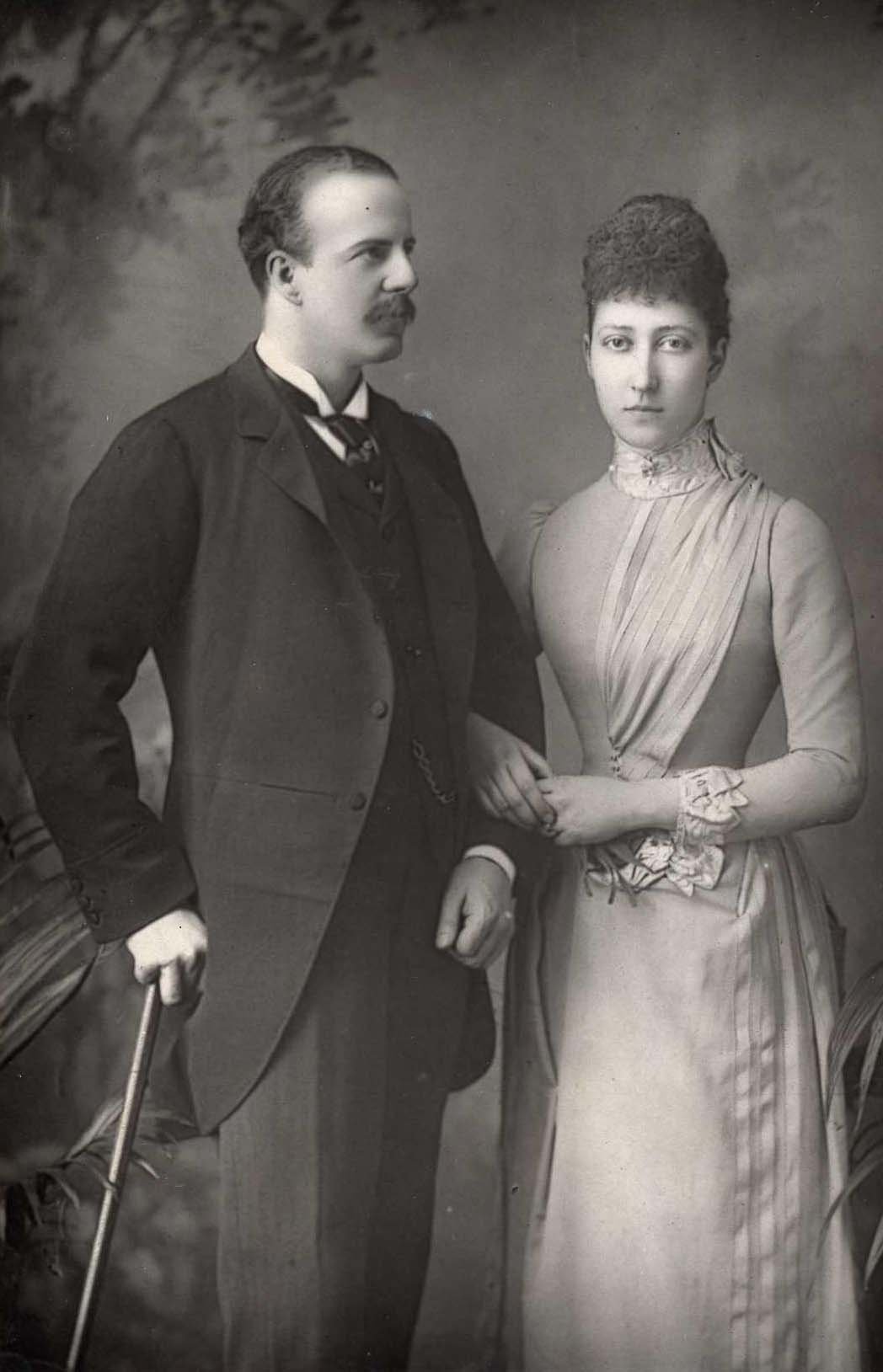
The marital status of Alexander’s sisters didn’t ultimately pose any issues for the prospective marriage. On June 28, 1889, British newspapers published the news that Queen Victoria had consented to her granddaughter’s engagement. Newspapers across the country published the official statement: “We are authorized to state that, with the consent of the Queen, the Prince and Princess of Wales have given their sanction to the engagement of Princess Louise, eldest daughter of their Royal Highnesses, with the Earl of Fife, K.T.” The report added that the “Prince and Princess of Wales, with their three daughters, went to Windsor yesterday afternoon, and visited the Queen, when her Majesty gave her consent to the engagement.”
While most of the press was positive about the match, the often-provocative periodical Truth, offered a less rosy assessment of Louise and her future husband. “The papers tell us that Princess Louise has gained ‘universal popularity,'” the publication noted on July 4, 1889. “Doubtless she would have, had she had the chance of becoming known to any one outside the Marlborough House set, but she never has had. Lord Fife, if he answered to journalistic descriptions, would indeed be a just man made perfect. He has been a prominent member of the Prince of Wales’s favorite coterie for nearly twenty years, and is a thorough Sybarite. He is a sufficiently liberal landlord, but he somewhat tries his tenants’ patience at times, as he is as rigorous a game preserver as his future father-in-law. His property has been very well managed by Mr. Horace Farquhar, and he is a fairly rich man, for his estates are all his own (i.e., not fettered by any entail), and he has been able to sell outlying portions at very remunerative rates.” The paper noted that Fife was also partner in a bank, but they cast a skeptical eye on other outlets’ claims about the number of estates he owned: “According to the daily papers, Lord Fife has six ‘regular seats.’ The real truth is that he has only two country residences, New Mar Lodge, near Braemar, and Duff House, Banffshire.”
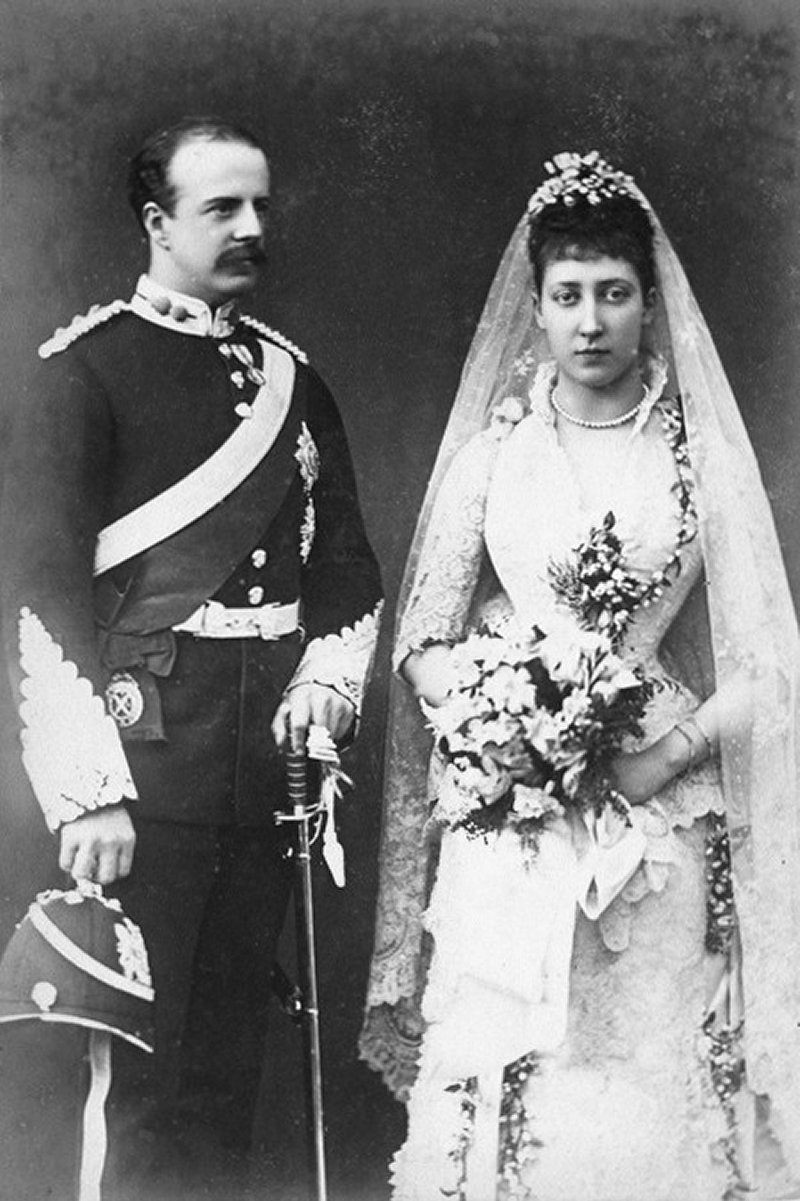
Princess Louise and Lord Fife said their wedding vows before the Archbishop of Canterbury in the private chapel at Buckingham Palace on July 27, 1889. The small chapel only had room for a limited number of guests, so the event was naturally a small one. Louise was escorted to the altar by her father, the Prince of Wales. There, Alexander waited with his best man, Horace Farquhar, his friend and business partner.
Louise was attended by eight bridesmaids, including her sisters, Princess Victoria and Princess Maud, and her future sister-in-law, Princess Mary of Teck. (The group was rounded out by two sets of cousins: Princesses Helena Victoria and Marie Louise of Schleswig-Holstein, and Countesses Feodore, Victoria, and Helena of Gleichen.) Queen Victoria was escorted in to the ceremony by her son-in-law, Grand Duke Louis of Hesse (widower of Princess Alice). Also in attendance were two of Louise’s royal Danish uncles, King George I of the Hellenes and Crown Prince Frederik of Denmark.

Louise was presented with a pile of wedding presents fit for a princess. Among them was a diamond fringe tiara from her parents, a set of floral brooches, and a diamond cross. But the grandest of all the jewels she was given had to be the incredible diamond tiara offered to her by her new husband. A special issue of The Graphic, published in August 1889 to celebrate the Fife wedding, describes the tiara as follows: “in a very uncommon and beautiful design, composed of hundreds of stones, ranging in weight from one carat to ten, the larger being what are technically known as briolettes—that is cut on both sides and turning on pivots so that they will flash with every movement of the head.” Another contemporary news report describes the tiara given by the duke as “a mass of diamonds, and one of the most valuable pieces of work in England.”
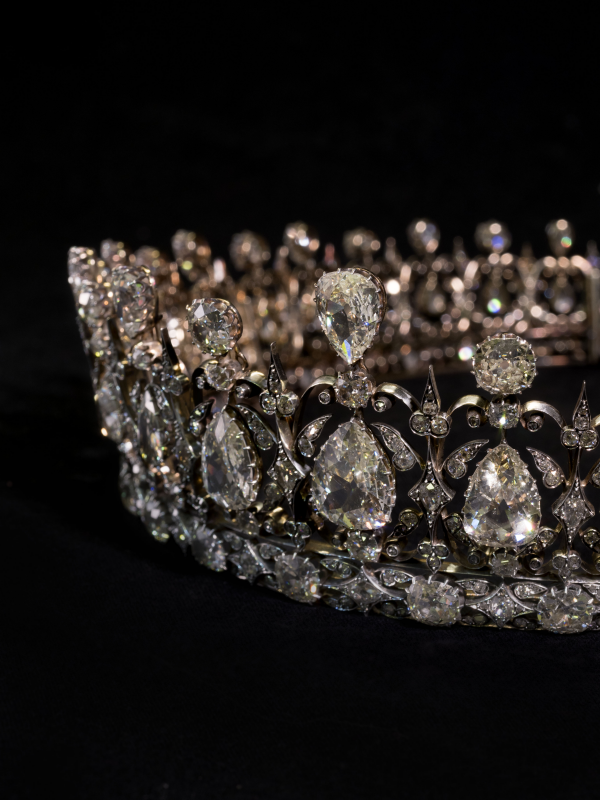
It seems extremely likely that the tiara was constructed based on a design by Oscar Massin, who had exhibited a very similar piece at the Exposition Universelle in Paris in 1878. Massin didn’t generally produce his tiara designs himself; instead, he partnered with other jewelry firms who executed the pieces he’d created. However, the maker of this tiara has never been positively identified.
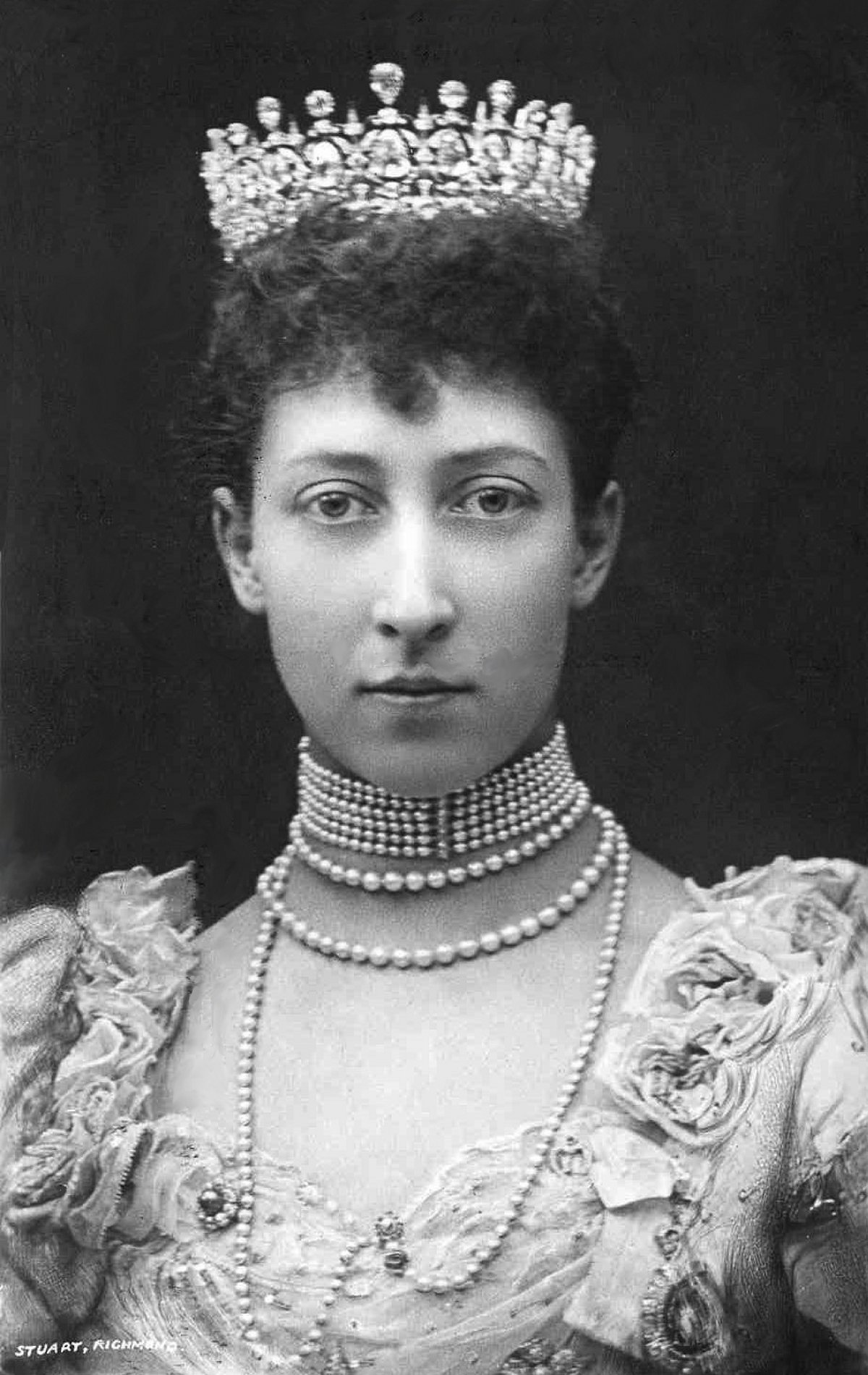
The tiara presented by Lord Fife to his bride equaled—or even surpassed—the splendor of any worn by her grandmother or mother (or, for that matter, most of the others worn at European courts). The magnificent gift certainly emphasized his wealth. But while he was now the husband of a Royal Highness, he was still a commoner, even if he was a rich one. Queen Victoria, though, soon decided that her new grandson-in-law needed an upgrade. She wouldn’t make him a prince, or elevate him to royal status. But she did ensure that he received a higher title than the one he inherited. On the wedding day, she created him Duke of Fife and Marquess of Macduff in the peerage of the United Kingdom.
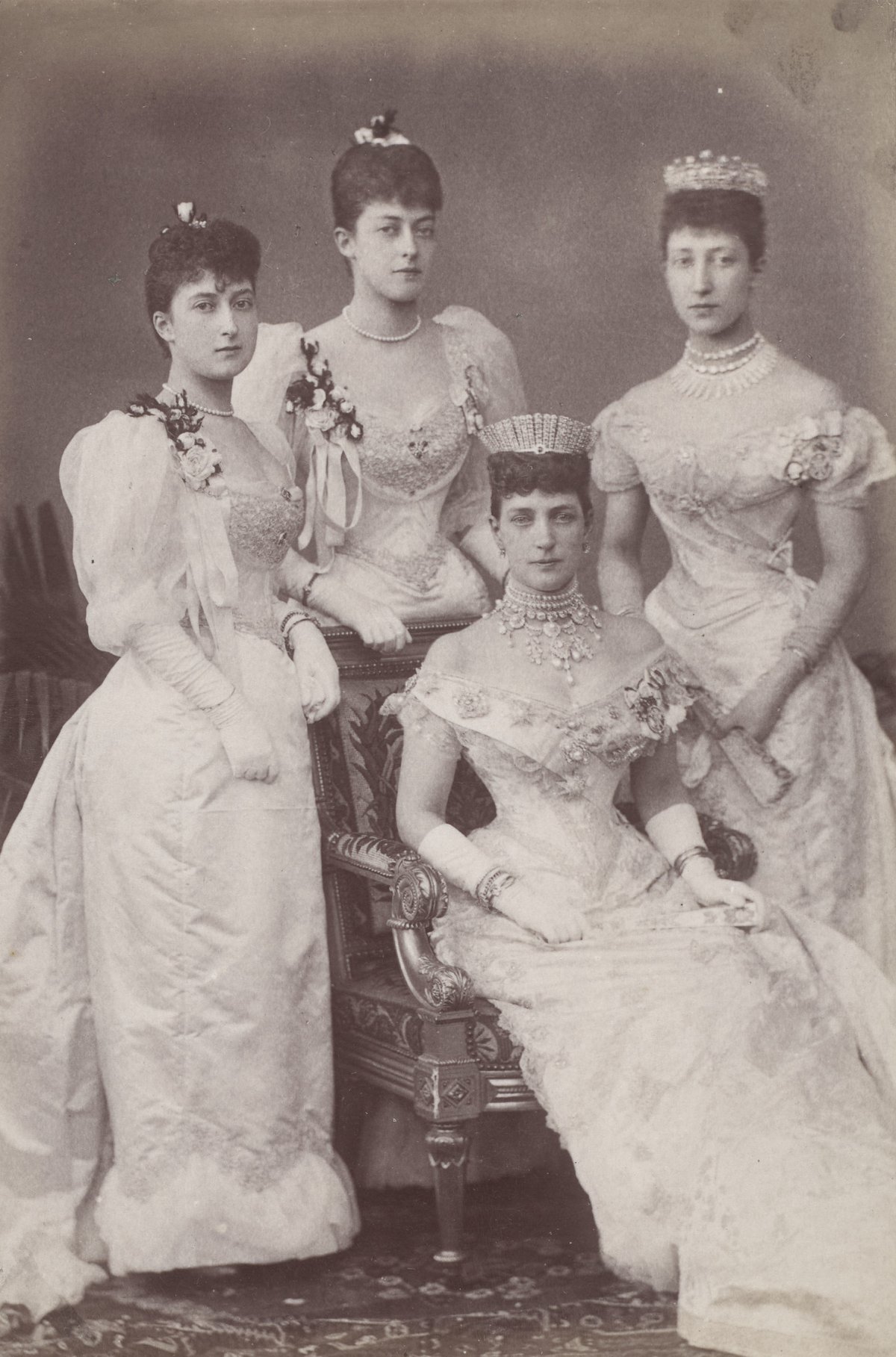
Princess Louise began wearing the Fife Tiara for grand royal events not long after her own royal wedding. In 1893, her elder brother, Prince George, Duke of York married one of her bridesmaids, Princess Mary of Teck. Louise wore the Fife Tiara to the wedding, as well as her diamond fringe tiara, worn in its necklace setting. (In the photograph from the event above, you’ll spot Louise’s mother, the Princess of Wales, wearing her diamond kokoshnik and her wedding gift necklace, among many other pieces of jewelry.)
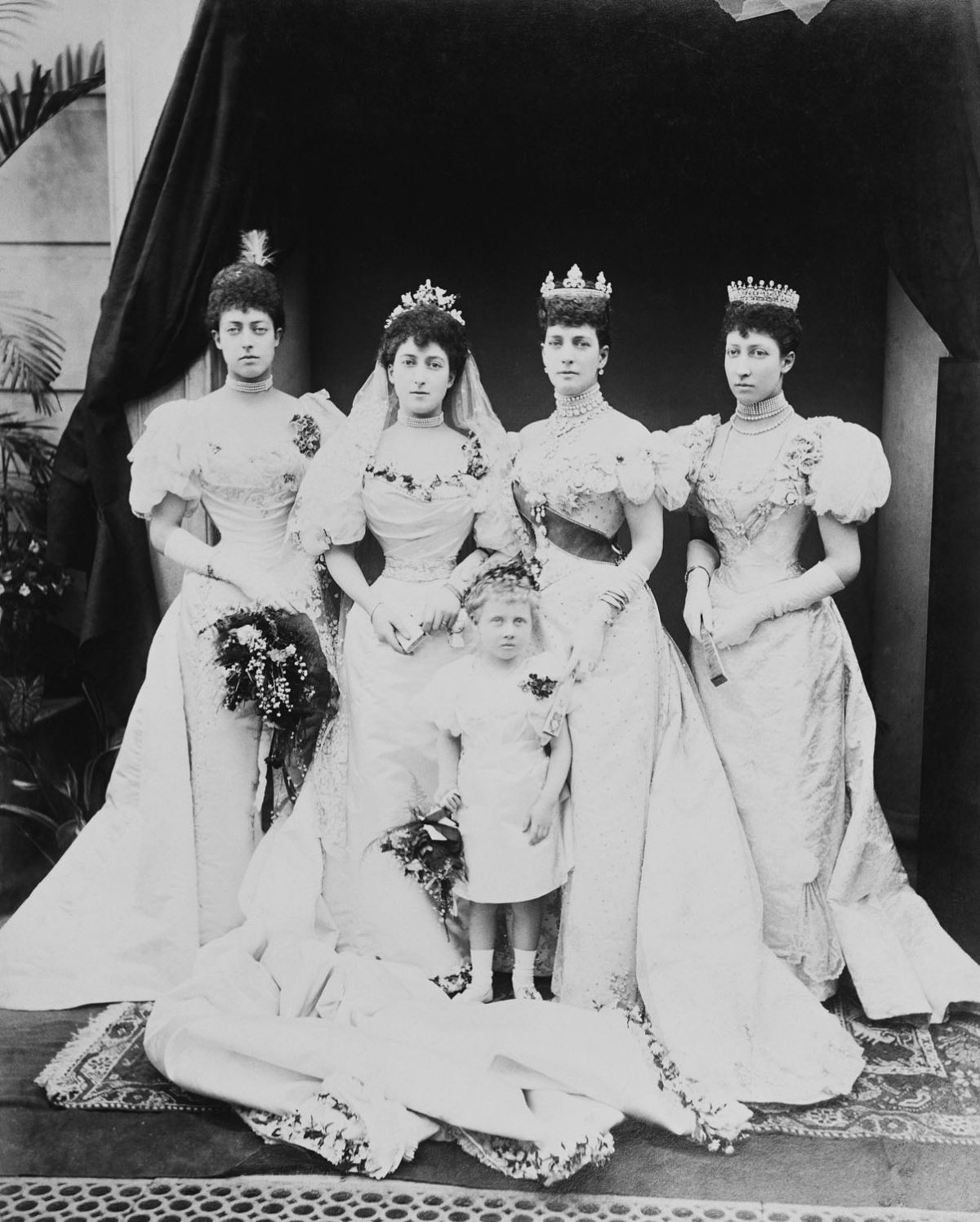
Three years later, in July 1896, Princess Louise wore the Fife Tiara for another family wedding: the marriage of her sister, Princess Maud, and their cousin, Prince Carl of Denmark (later King Haakon VII of Norway). In the image above, you’ll also spot the Princess of Wales wearing her wedding gift tiara with its fleur-de-lis toppers. And you’ll spot a new addition to the Wales family. Princess Louise gave birth to Lady Alexandra Duff in May 1891; she was followed two years later by a sister, Lady Maud, in April 1893. Five-year-old Lady Alexandra is pictured with her grandmother, mother, and aunts in the wedding portrait above.
As the years went by, it became increasingly clear that Louise would not be having any more children, which meant that there wouldn’t be a male heir to inherit the Fife dukedom. Queen Victoria stepped in once again to provide a solution. In 1900, the year before she died, she reissued the dukedom, changing the terms so that it could be inherited by the couple’s daughters. Lady Alexandra, who was not quite nine, became her father’s heir apparent.
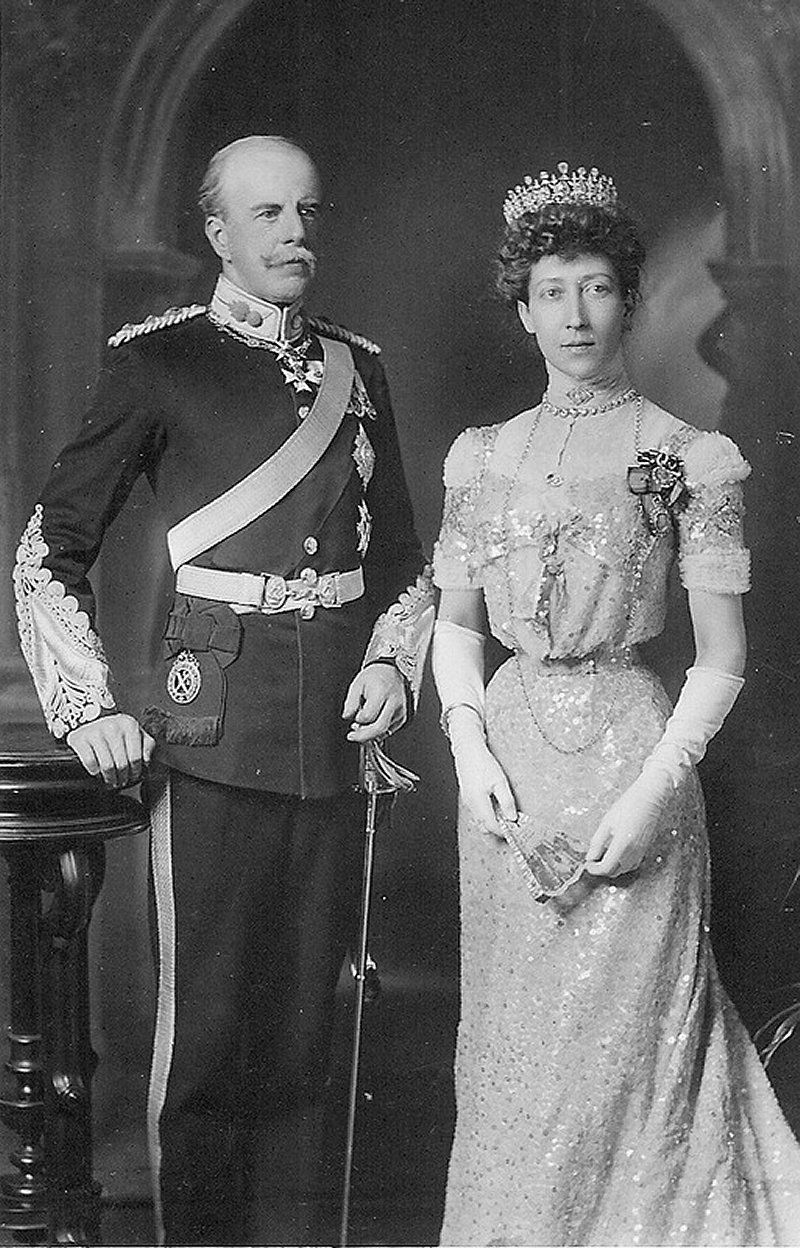
Princess Louise kept the tiara for the rest of her life. She remained a vital member of the royal family, especially after the accession of her parents as King Edward VII and Queen Alexandra of the United Kingdom in 1901. Four years later, in 1905, her parents gave her a significant gift. On November 9, King Edward VII elevated his daughter to the title of Princess Royal. At the same time, he made his Fife granddaughters princesses, with the style of Highness.
More than two decades after their marriage, the Duke of Fife and Princess Louise posed for a new portrait. These were taken around the time of the coronation of her brother, George, as King George V of the United Kingdom. Louise wore the Fife Tiara in the formal image.

The Royal Collection also holds a miniature portrait of Louise wearing the Fife Tiara. The tiny painting is based on the 1911 photograph, and it depicts her wearing the same clothing and jewels.
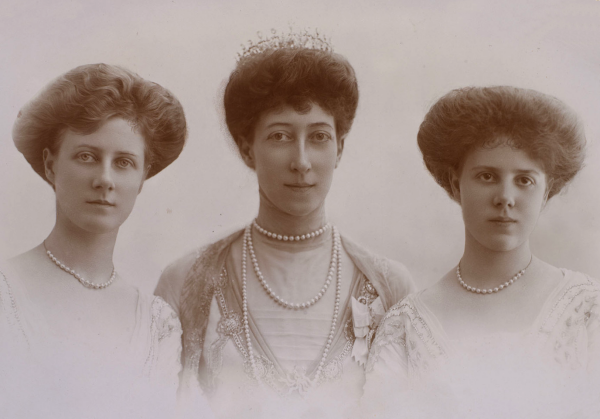
Around the same time, Louise also posed for portraits with her daughters, Princess Alexandra and Princess Maud. The three princesses look especially serene in the image. They could not have known that tragedy was lurking just around the corner.
In December 1911, the Fife family embarked on a planned trip to Egypt, sailing from London aboard the Delhi, a steamer owned by the Peninsular and Oriental Steam Navigation Company. Off the coast of Morocco, near the Straits of Gibraltar, the ship ran aground in the midst of a raging storm. Contemporary newspapers reported that Louise and her daughters “were among those rescued,” and that they subsequently went “to Gibraltar on a warship.” The report initially sounds fairly uncomplicated, but the rescue was anything but. According to the press, the rescue “was accomplished under great difficulties,” and “three boats were swamped” in the process, with one fully capsizing in the heavy surf. “One of the daughters of the Duchess of Fife was narrowly saved from drowning by a sailor who grabbed her by the shoulders and held her up until the two were dragged ashore,” one report noted.
While Louise, Alexandra, and Maud were quickly removed from the Dehli, the 62-year-old Duke of Fife had stayed behind with the ship and was rescued later. Initially, it seemed like the casualties for the family after the wreck would be fairly minimal. Princess Louise lost a case of her jewels when it was washed away; the case was never recovered. More embarrassingly, the press reported that the family stayed longer than expected after the wreck in Tangier—not because any of them was ill, but because Louise had lost the wig she always wore during the ordeal, and she refused to appear in public until a new one could be supplied for her.
But the consequences of the shipwreck were indeed much more serious for the Fifes. The family made it to Egypt, but by the time they arrived, it was clear that all was not well with the Duke. In Aswan, in January 1912, the Duke began to complain of illness. What initially seemed like a simple fever soon revealed itself to be pleurisy, possibly developed as a result of the earlier wreck. He went into heart failure and died in Egypt on January 29.
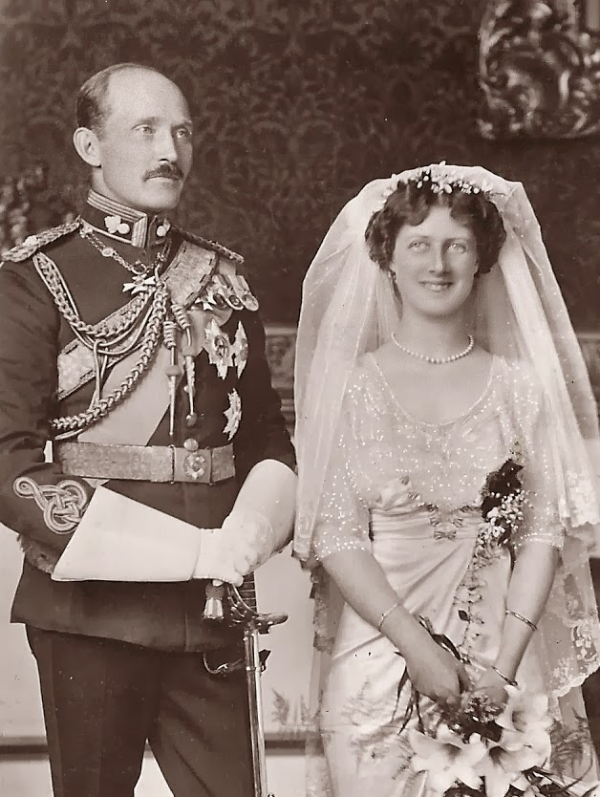
In the wake of her father’s death, Princess Alexandra became the 2nd Duchess of Fife, holding the title in her own right. (She also inherited his estates and his fortune. One newspaper reported her to be among the wealthiest women in England.) The following year, though, she began using a different title altogether. In October 1913, Alexandra married Prince Arthur of Connaught. Arthur was her first cousin once removed; his father, the Duke of Connaught, was Princess Louise’s uncle. After the wedding, she began using the feminine version of her husband’s title: HRH Princess Arthur of Connaught.
The couple was apparently quite happy, working side by side to represent the royal family in South Africa, where Prince Arthur served as Governor-General. They had one son, Alastair. But, intriguingly, Alexandra’s married life could have gone quite differently. In 1910, she had secretly accepted a marriage proposal from another royal cousin, Prince Christopher of Greece and Denmark. Reports of the betrothal made it to the papers, where the press reported that Christopher had charmed the young princess during a stay with the Fifes at Mar Lodge. But, ultimately, neither family had approved of the match, and when they found out, the young couple was separated. Though Christopher was supposedly a favorite nephew of Queen Alexandra, his own lack of fortune, compared with Alexandra’s great inheritance, was apparently a major sticking point.
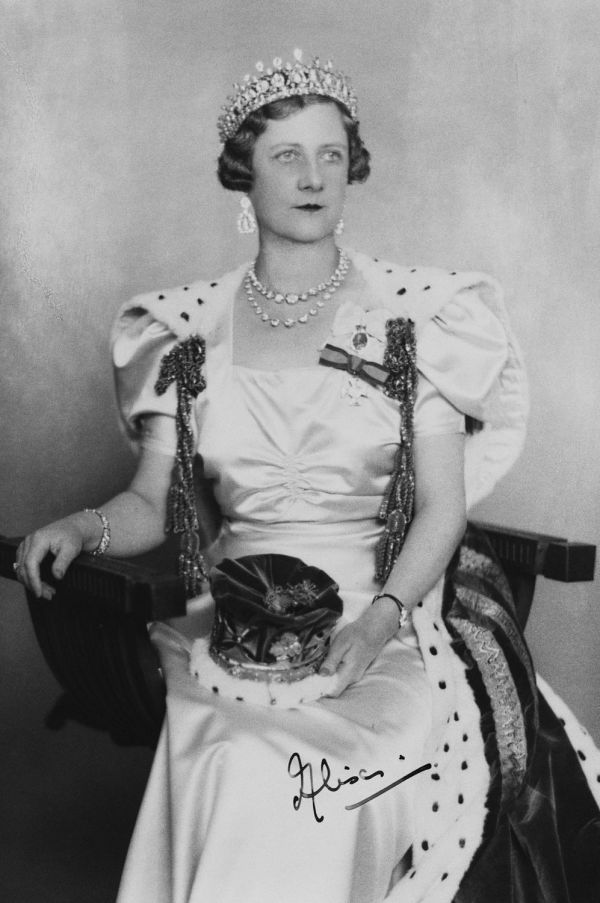
In 1931, Princess Louise died after several years of poor health. The Fife Tiara was bequeathed to Princess Alexandra, who wore it on numerous occasions after her mother’s death. Two of the most important were a pair of twentieth-century coronations. She sported the tiara for the coronation of King George VI and Queen Elizabeth in 1937, and again at the coronation of Queen Elizabeth II in 1953. The portrait above was taken at the time of the 1937 coronation.
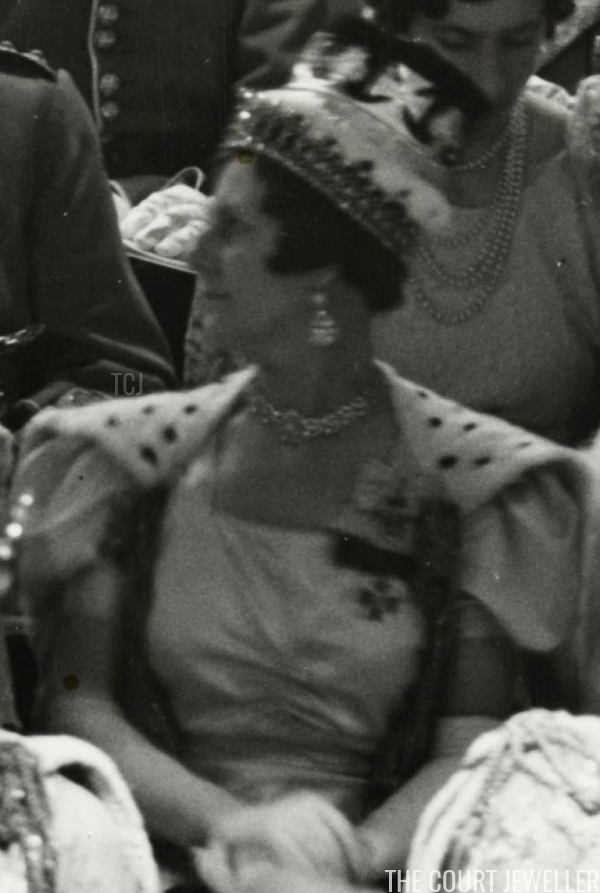
And here’s a view of Alexandra wearing the tiara in Westminster Abbey during the 1937 coronation itself. She’s scowling a little in the image—believe it or not, the face is directed at her sister, Princess Maud, who is blowing her nose in another part of the royal gallery (!). At this angle, you also get to see how the Fife Tiara looks when worn with a coronet.
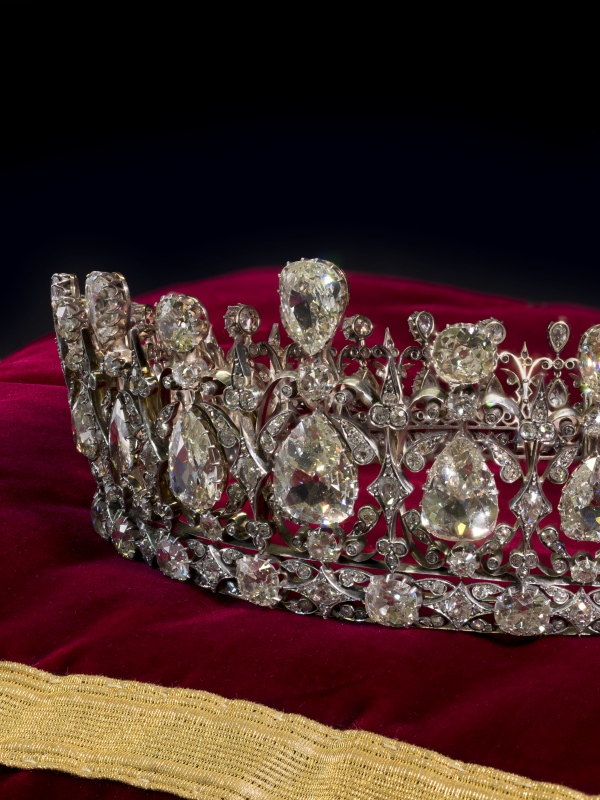
By all rights, the Fife dukedom and tiara should both have been inherited by Alexandra’s son, Alastair. His father, Prince Arthur, died young of cancer, passing away in 1938 at the age of only 55. In 1942, when the Duke of Connaught died, Alastair inherited that title. The twenty-eight-year-old was poised to become a double duke when he inherited his mother’s title one day. But none of that would happen. In 1943, less than a year after inheriting his grandfather’s title, Alastair died while serving with the army in Canada. It wasn’t a noble death: he reportedly died by falling out of a window while drunk, and then suffered from hypothermia in the Canadian cold.
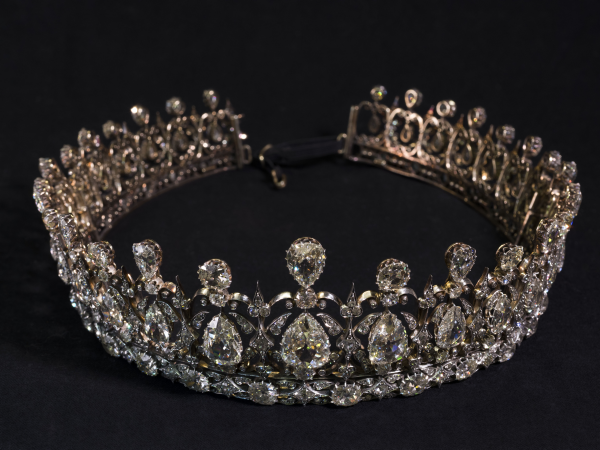
So, when Alexandra died in 1959, the dukedom and the tiara both passed to her nephew. James Carnegie was the only son of Alexandra’s sister, Princess Maud, and her husband, the Earl of Southesk. He became the 3rd Duke of Fife when his aunt died. During his lifetime, the tiara was largely used for family weddings, worn by both his daughter and his daughter-in-law. For many years, the tiara wasn’t photographed, and many feared that it was perhaps privately sold. The death of the 3rd Duke of Fife in the summer of 2015 meant that the tiara’s fate was even more uncertain.

But in 2017, we learned exactly what happened to the tiara, which hadn’t been sold at all. In November, the Arts Council England published its report on a pair of government programs designed to allow important works of art to transfer into public ownership, and the Fife Tiara was listed among the culturally-significant items that now belong to the British people. A panel of experts recommended that the tiara be accepted by the government in lieu of tax. For taxation purposes, the tiara was valued at 1.4 million pounds. The piece includes nearly 200 total carats of diamonds. The report provided some of the reasons that the panel decided to accept the tiara as a culturally-significant artifact: “The tiara is of extraordinary beauty and given the huge carat weight of diamonds and the importance of the largest pear-shaped stones, it is a miracle that such a jewel has been preserved in its original form.”
Perhaps the best part of all, though, was that the offer to the government was conditional. Part of the agreement stated that the tiara “has been permanently allocated to Historic Royal Palaces for retention and display at Kensington Palace in accordance with the condition attached to the offer.” In March 2018, the Fife Tiara went on display at the palace as part of the Victoria Revealed exhibition. It is currently shown alongside several other jewels from the Fife family, including Princess Louise’s diamond fringe necklace/tiara and the grand diamond and emerald parure that belonged to Queen Victoria.
Leave a Reply
You must be logged in to post a comment.